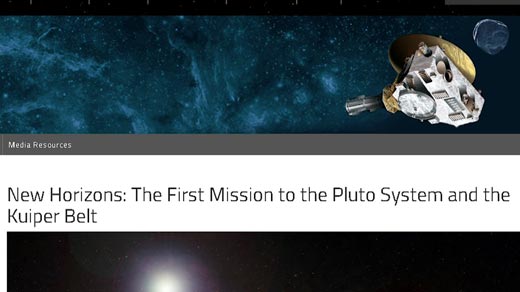-
Tips for becoming a good boxer - November 6, 2020
-
7 expert tips for making your hens night a memorable one - November 6, 2020
-
5 reasons to host your Christmas party on a cruise boat - November 6, 2020
-
What to do when you’re charged with a crime - November 6, 2020
-
Should you get one or multiple dogs? Here’s all you need to know - November 3, 2020
-
A Guide: How to Build Your Very Own Magic Mirror - February 14, 2019
-
Our Top Inspirational Baseball Stars - November 24, 2018
-
Five Tech Tools That Will Help You Turn Your Blog into a Business - November 24, 2018
-
How to Indulge on Vacation without Expanding Your Waist - November 9, 2018
-
5 Strategies for Businesses to Appeal to Today’s Increasingly Mobile-Crazed Customers - November 9, 2018
Glitch Halts New Horizons Operations As It Nears Pluto – Military
Ten days before its historic flyby of Pluto, NASA’s New Horizons spacecraft lost contact with mission control, for unknown reasons, for an hour and 21 minutes on 4 July.
Advertisement
Late last night NASA said that they’d determined the nature of the error and that it was a “hard-to-detect timing flaw” in a command sequence that occurred as the spacecraft prepared for its up-close Pluto flyby.
The mission is being closely watched by millions of space enthusiasts because the spacecraft’s flyby of Pluto on July 14 will offer the world’s first close look at the distant dwarf planet.
“Now – with Pluto in our sights – we’re on the verge of returning to normal operations”, NASA’s planetary science director Jim Green said in a statement. It took more than nine years for the spacecraft to cover 3 billion miles of space between the Earth and Pluto.
While most Americans were celebrating Independence Day, New Horizons mission managers at NASA were seeking to regain contact with the spacecraft en route to Pluto.
NASA released a statement early Monday that the spacecraft returns to normal science operations.
Lead scientist Alan Stern explained that these particular instructions, labeled as the “encounter program”, will ensure that the spacecraft keeps its scientific research systems online in case of a primary computer malfunction, while trying to fix the problem itself.
It’s not clear exactly what happened yet, but an on-board anomaly sent New Horizons into safe mode.
After the backup computer re-established communications with Earth, it began transmitting diagnostic information that will assist engineers with their investigation. At such distances, radio waves take four-and-a-half hours to reach Earth from New Horizons, and double that for a round-trip message. The spacecraft is equipped with multiple backup systems, including redundant flight computers, navigation equipment and data recorders to help it recover from major problems.
Advertisement
The probe has been barreling towards the dwarf planet and its main moon, Charon, since January 2006.





























